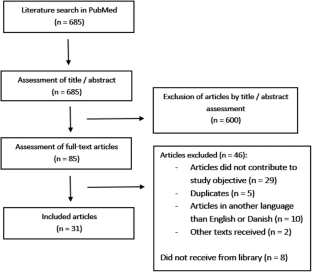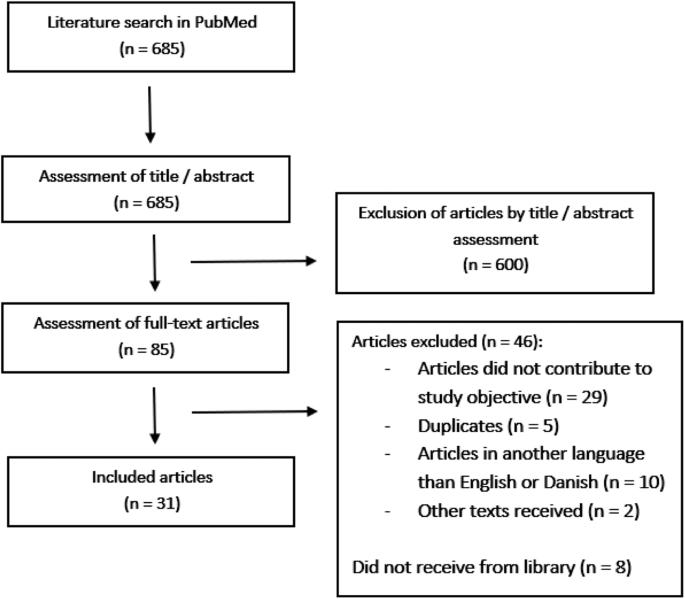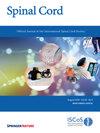Urologic surveillance of persons with spinal cord injuries – a scoping review
IF 2.2
4区 医学
Q3 CLINICAL NEUROLOGY
引用次数: 0
Abstract
Scoping review - standardized according to the Equator-network and the Prisma-Statement guidelines with PRISMA-ScR. Review the literature concerning surveillance of the urinary- and renal systems in persons with spinal cord injuries (SCI). Specifically, to assess: #1 the usability of non-invasive and non-ultrasound methods, #2 the usage of systematic ultrasound surveillance #3 patient characteristics which predispose to urinary tract abnormalities (UTA) or renal function deterioration. The literature assessed was collected from PubMed by creating a search string comprised of three main phrases: #1 persons with SCI, #2 kidney function and #3 surveillance program. The final search resulted in 685 studies. Eligibility criteria were defined prior to the search to assess the studies systematically. Four studies found serum cystatin C (s-cysC) to be accurate in estimating the glomerular filtration rate in persons with SCI. One study found no difference in UTA between surveillance adherent and surveillance non-adherent persons up to 30 years post injury. UTA and especially renal function deterioration seems rare the first 15 years post-injury. Non-traumatic SCI, time since injury, high detrusor pressure, upper urinary tract dilation, vesicourethral reflux, trabeculated bladder, history of calculi removal are significant risk factors for developing UTA or renal function deterioration. Measurements of S-cysC should be considered to replace serum creatinine in most cases. Surveillance non-adherent persons are not at higher risk of developing UTA. A selective surveillance based on a baseline risk profile may be beneficial for patients and caretakers.


脊髓损伤患者的泌尿系统监测--范围界定审查
研究设计范围综述--根据赤道网络(Equator-network)和 PRISMA-ScR 的 Prisma-Statement 指南进行标准化。具体而言,评估#方法通过创建由三个主要短语组成的搜索字符串,从 PubMed 收集所评估的文献:#1 SCI 患者,2 肾功能,3 监控项目。最终共搜索到 685 项研究。结果四项研究发现血清胱抑素C(s-cysC)能准确估计 SCI 患者的肾小球滤过率。一项研究发现,在受伤后 30 年内,坚持监测和不坚持监测者的UTA 没有差异。UTA,尤其是肾功能恶化在受伤后的前 15 年似乎很少见。非创伤性 SCI、受伤后时间、高逼尿压力、上尿路扩张、膀胱尿道反流、膀胱小梁、结石摘除史是发生UTA或肾功能恶化的重要风险因素。未坚持监测的人患UTA的风险并不高。根据基线风险概况进行选择性监测可能对患者和护理人员有益。
本文章由计算机程序翻译,如有差异,请以英文原文为准。
求助全文
约1分钟内获得全文
求助全文
来源期刊

Spinal cord
医学-临床神经学
CiteScore
4.50
自引率
9.10%
发文量
142
审稿时长
2 months
期刊介绍:
Spinal Cord is a specialised, international journal that has been publishing spinal cord related manuscripts since 1963. It appears monthly, online and in print, and accepts contributions on spinal cord anatomy, physiology, management of injury and disease, and the quality of life and life circumstances of people with a spinal cord injury. Spinal Cord is multi-disciplinary and publishes contributions across the entire spectrum of research ranging from basic science to applied clinical research. It focuses on high quality original research, systematic reviews and narrative reviews.
Spinal Cord''s sister journal Spinal Cord Series and Cases: Clinical Management in Spinal Cord Disorders publishes high quality case reports, small case series, pilot and retrospective studies perspectives, Pulse survey articles, Point-couterpoint articles, correspondences and book reviews. It specialises in material that addresses all aspects of life for persons with spinal cord injuries or disorders. For more information, please see the aims and scope of Spinal Cord Series and Cases.
 求助内容:
求助内容: 应助结果提醒方式:
应助结果提醒方式:


